Oak Openings Metro Park is a 4,000 acre metro park in Lucas county. It has over 30 miles of well-marked hiking trails over some of the state’s most interesting and diverse terrain. It features many varieties of plants, and it is on the main path for seasonal bird migration. Oak openings also has sand dunes despite being miles from the nearest large body of water. How the sand dunes got there is an interesting story in itself.
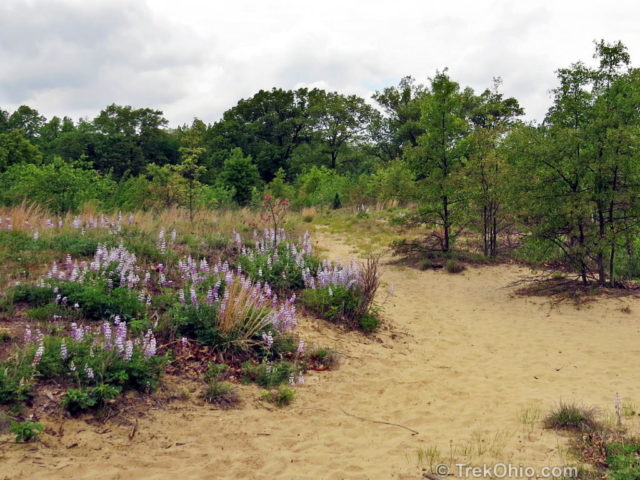
The History and Habitat
Twenty one thousand years ago, much of what is today Ohio was covered by a sheet of ice known as the Wisconsin Glacier. In northern Ohio, the ice sheet was a mile thick. As the current inter-glacial period began this enormous mass of ice began to melt. The melting glacier produced water – a lot of water. As the glacier melted, a series of huge lakes were formed, the last of which was named Lake Warren.
Lake Warren included all of what is today Lake Erie, much of northwest Ohio and portions of neighboring Indiana. Lake Warren had sandy beaches as well as dune covered barrier islands. About 11,000 years ago, the waters of Lake Warren receded leaving behind modern Lake Erie and an enormous swamp surrounding the remnants of the barrier islands. The swamp measured 120 miles long and 40 miles wide. Early settlers viewed the swamp as an often impenetrable, malaria-ridden barrier.
However, within the Great Black Swamp, there was one area that was free of swamp. It was an oak-covered savanna with occasional sand dunes. Lightning sparked frequent, naturally occurring fires that helped to keep the area from turning into forest. It is also believed that Native Americans did controlled-burns to keep the open areas open. The relatively fire-resistant oaks that survived actually thrived in the well-drained, sandy soil. The settlers traveling through this region called it the “Oak Openings”. It was a welcome relief to those who had crossed the swamp.
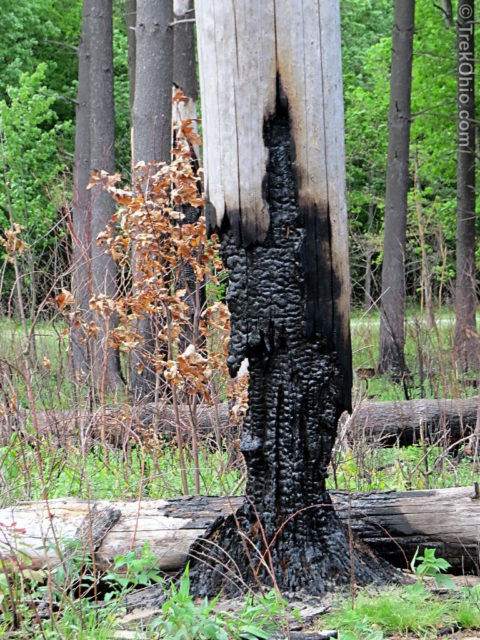
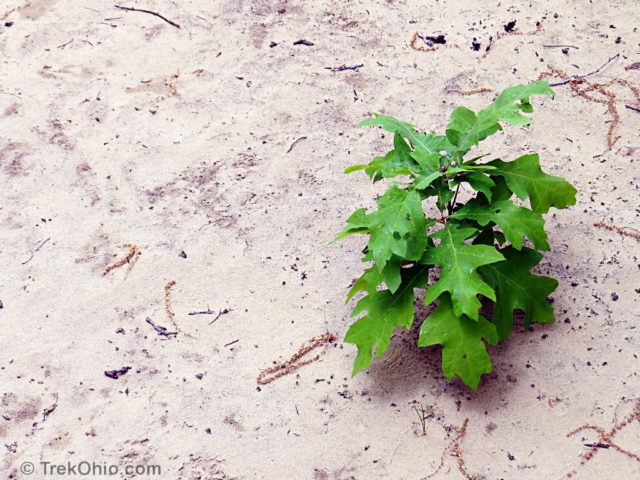
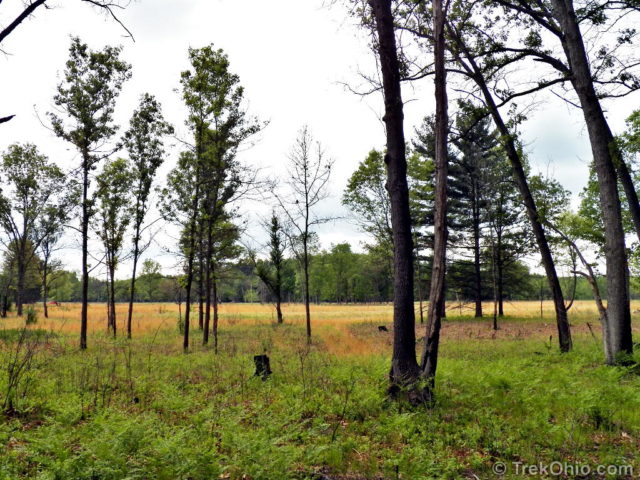
By the 1850’s Ohioans began draining the Great Black Swamp, converting it to rich farmland. By the start of the 20th century, it was mostly gone. Little remains of the Great Black Swamp today, except remnants of its Oak / Hemlock forest – such as the forest in Pearson Metropark. [Updated text – my thanks to Tom Arbour (see comment below) for his clarification]
Today, a small portion of the Oak Openings savanna is preserved at the 4,000-acre Oak Openings Metro Park. There you can explore the unusual oak savanna habitat and visit sand dunes that still shift with the wind.
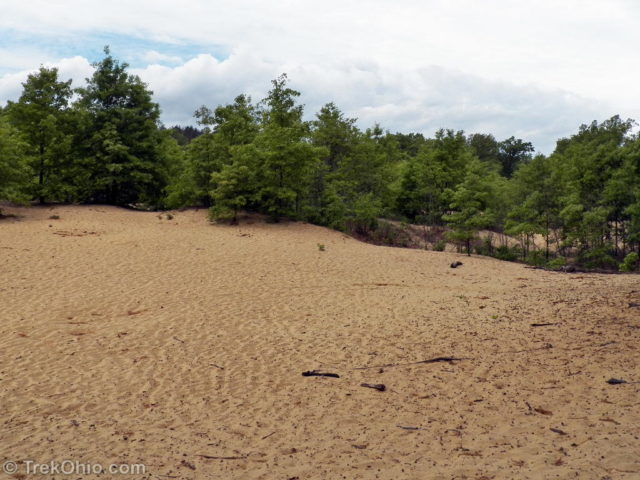
What lives there
The habitat, oak openings, is sometimes referred to as Black oak openings in reference to the tree whose foliage is shown below. Check out its red, fuzzy leaves.
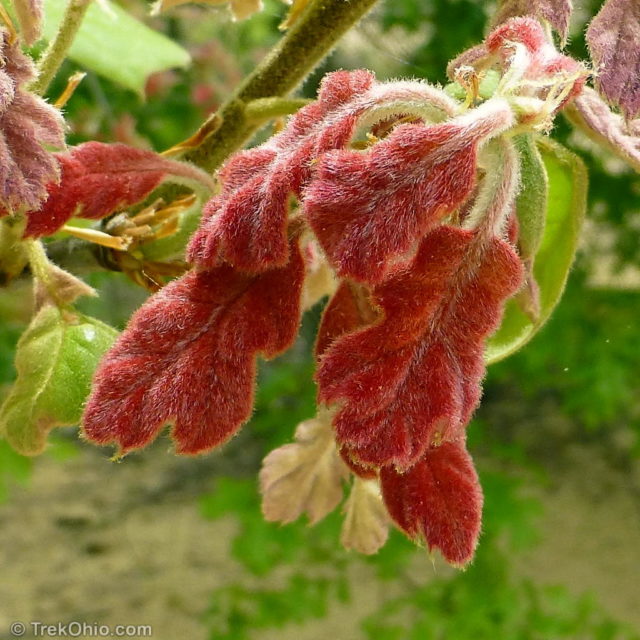
These are fresh, spring leaves. As the leaves mature they turn green. This fuzziness is a plant adaptation that slows the tree’s loss of moisture through its leaves. Conserving moisture is important for saplings growing in sand since rainwater will soon sink below the reach of its roots.
Since we were in the Oak Openings in May we also had an opportunity to view the spring wildflowers there. The region is widely known for its wild lupine which is pictured at the top of this post. Let’s take a closer look at it.
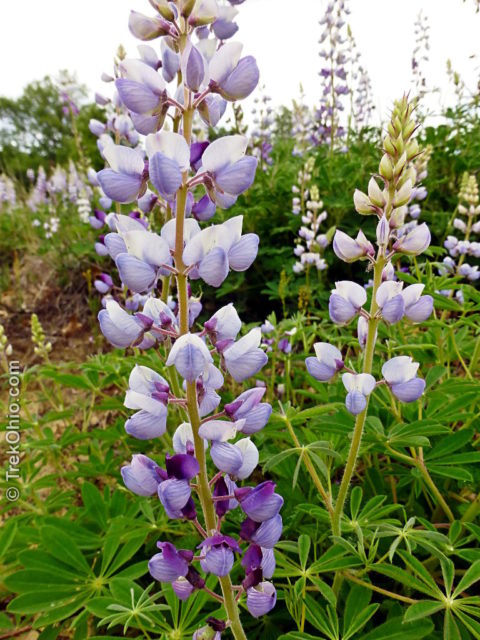
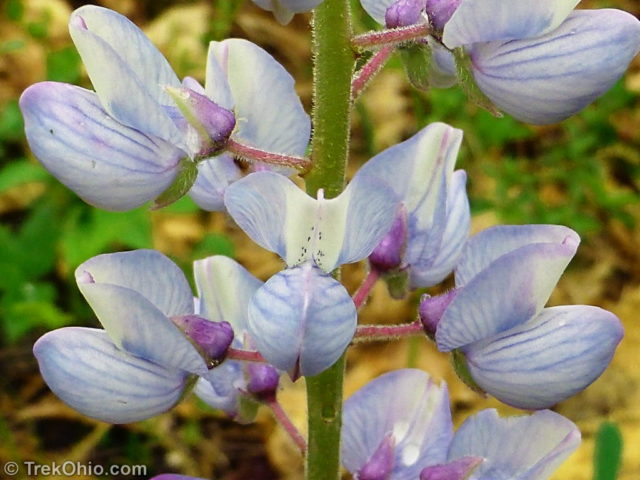
The wild lupine is an important food source for the federally endangered Karner blue butterfly. Although this butterfly had disappeared from Ohio, the Toledo Zoo reared one hundred of them. In 2007 these butterflies were released into the wild at the Oak Openings Preserve. We didn’t see one ourselves, but below is a photo which Coralie Mrsroadrunner published of this species under a Creative Commons license.
May Flowers, Ferns, and Animals
Below are a couple of other wildflowers that we saw in May.
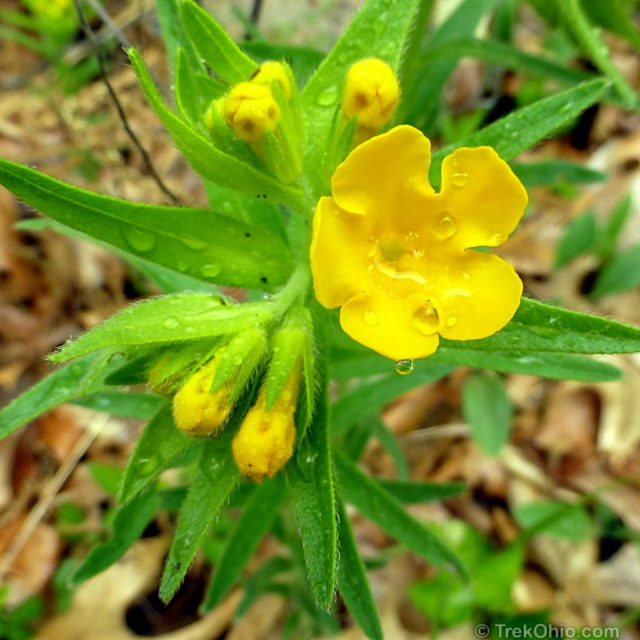
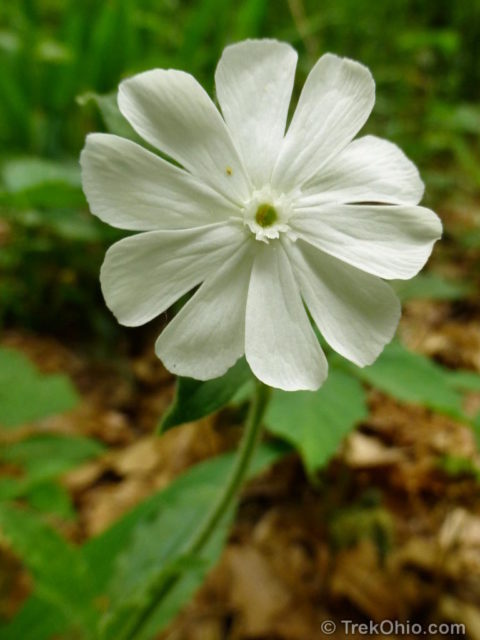
One of the most striking features of the vegetation at Oak Openings was the abundance of ferns.
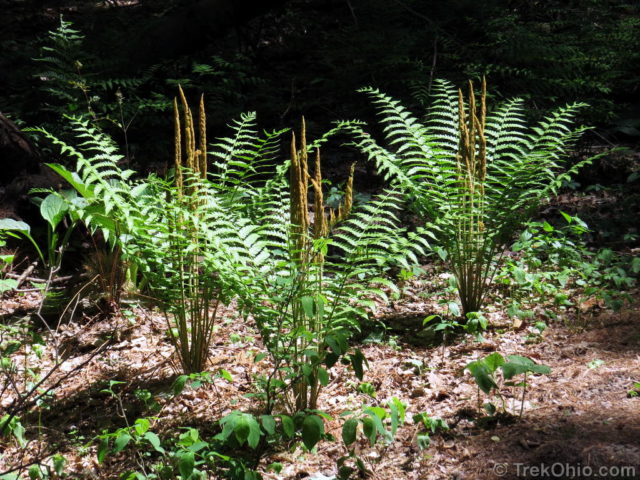
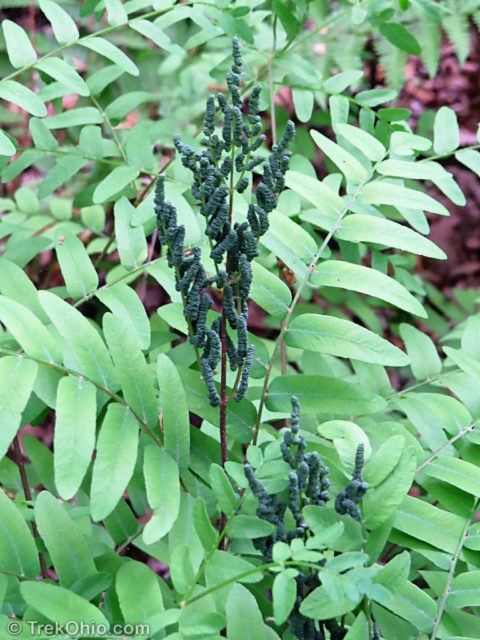
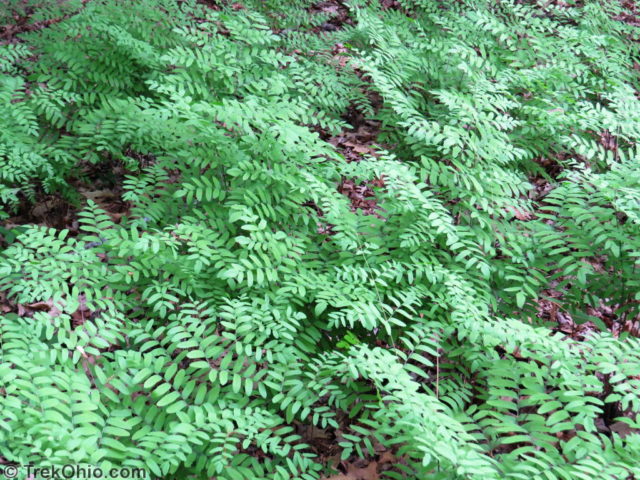
The Oak Openings is a year-round destination for birders. We saw a number of birds, including the colorful Indigo bunting.
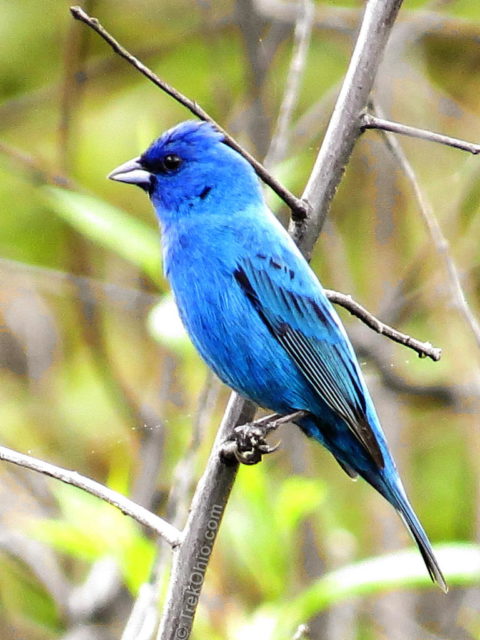
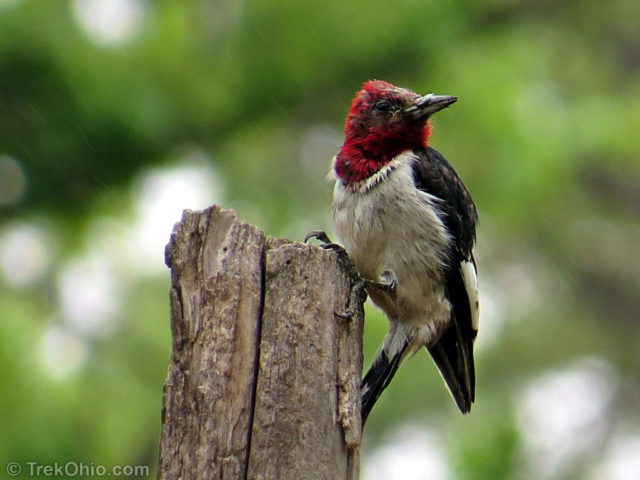
We also saw deer and squirrels.
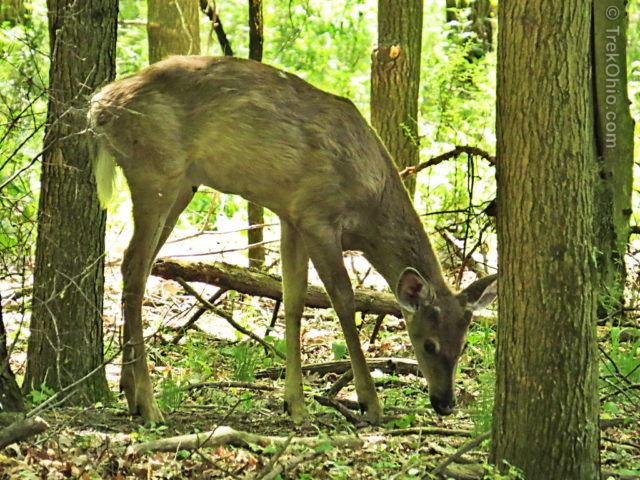
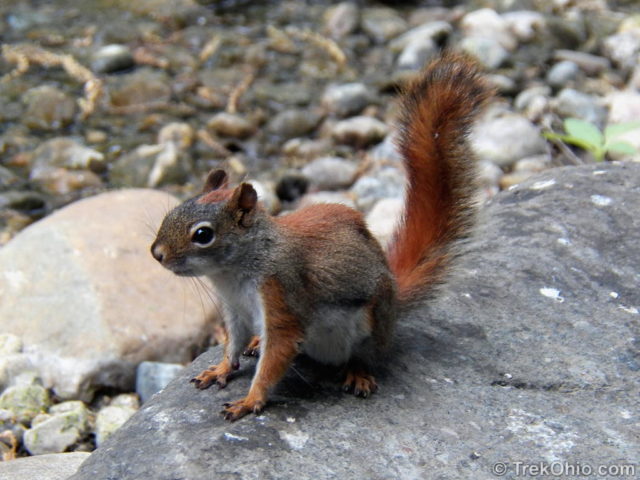
The Park
The park features over 30 miles of hiking trails, including a 15 mile backpack trail, 5 miles of paved bike path, and 22 miles of bridle trails. This is the only park in the Toledo Metropark system that offers bridle trails. There is also a connector trail to the regional Wabash Cannonball hike/bike trail. In the winter, Oak Openings has designated trails for cross-country skiing.
We started our exploration at the Buehner Center. This building and its surroundings include exhibits describing the area, a wildlife observation area, a playground, picnic shelters, and restrooms. It is also the trail head for several hiking trails, and a pond lies a short distance beyond it.
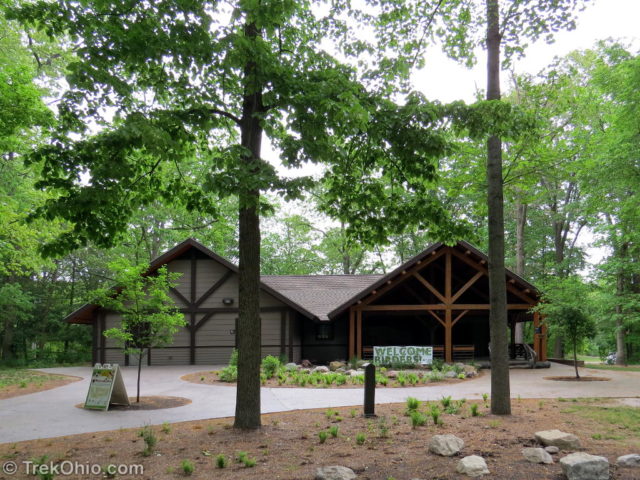
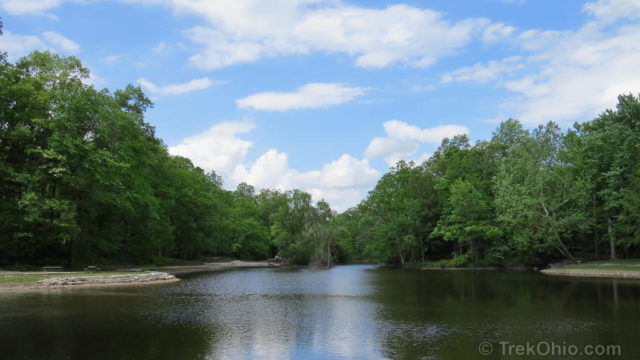
Our time was limited so we hiked the 1.7 mile Sand Dunes Trail and the 1.9 mile Evergreen Trail. The Sand Dunes Trail took us to some of the dunes left over from the Lake Warren barrier island. It was a unique experience seeing sand dunes unaccompanied by any bodies of water. The Evergreen Trail traverses a pine plantation and then passes through prairie and savanna habitats. Had we more time, we could have spent many days exploring this unique park.
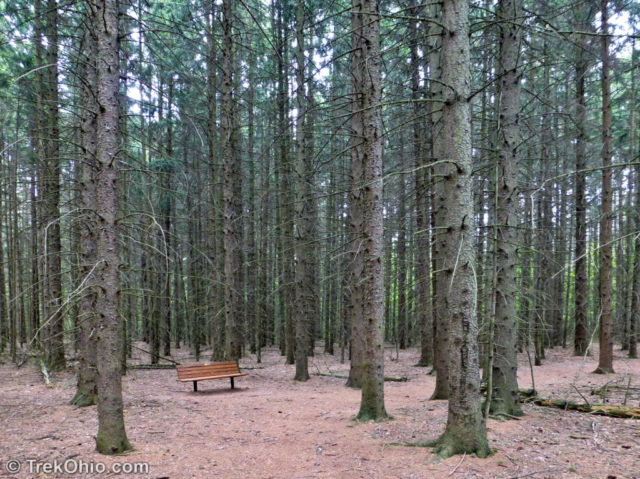
Dogs are permitted at the park and we saw a lot of people out walking with their pooch. Owners are required to clean up after their dogs and to keep them on a leash.
Additional information
- TrekOhio: Lucas County Parks & Preserves — This is the county where Oaks Opening is located; check out this page for links to the official site and for information on nearby parks and preserves.
- TrekOhio: Basic Fern Identification
- TrekOhio: Birding Resources — Our collection of links to websites, articles, maps, and videos related to birding in Ohio. Points to information on birding hotspots, organizations, events, and more.
- TrekOhio: Our articles on the “Biggest Week in American Birding” over a number of years.
- eBird: Bird Observation at Oak Openings by Season
- Buckeye Botanist: Wild Lupines – Botanist Andrew Gibson’s post on the wild lupines of Oak Openings; includes outstanding photos of the flowers.
- Buckeye Botanist: Fall at Oak Openings – Botanist Andrew Gibson’s post on the region’s unique fall flora
- Wikipedia: Oak Savanna
- Oaksavannas.org: Trees of Oak Savannas
- Ohio Division of Wildlife video on Oak Openings
Location
Address: 4139 Girdham Road, Swanton, Ohio
More on Lucas County
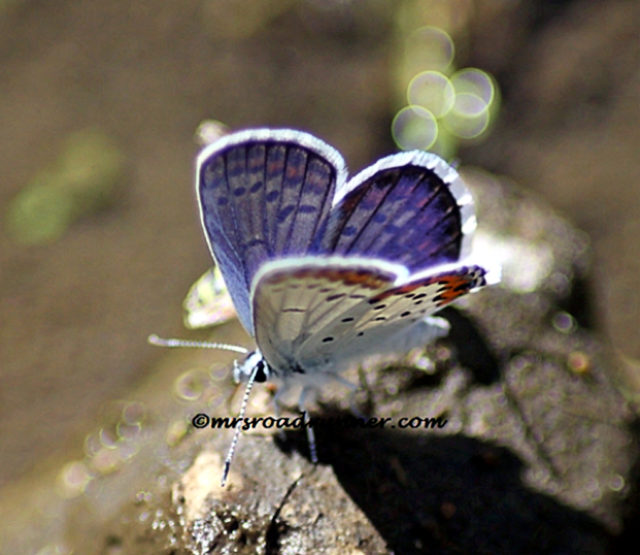
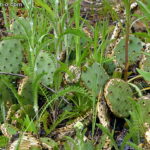

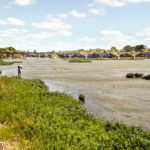
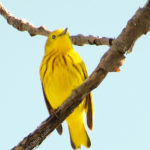
Thanks for your beautifully written article..I grew up next to openings and waded In the creek that became evergreen lake.before the building of that lake there was rumors of quick sand..I now believe that was the remaining marsh that covered that area.I am looking for history regarding mallard lake in the main park…I believe it was built in the ’30s as a govenment relief project.
Your welcome, Lisa. I tried googling for the information that you are looking for, and I think that I came up with something on this MetroPark page: The Beginning – 1928-1939. In particular note the following from this article:
This seems to confirm your belief.
Hello there, I was told to come check out my photograph 😉 I hope you do get to have the opportunity to see these small butterflies in the wild! As I once read, these small blues do turn the ground blue! 🙂
Beautiful photo. I hope that I can see a wild Karner Blue someday. Currently, in Ohio they remain extremely rare.
Brilliant post, I love the shots of the deer and squirrel – so cute! 🙂 x
Every time Your photos are so great, but the contents of Your posts are valuable – so is this one also.
Bob and Deb- very nice write-up. I just wanted to clarify something about the great black swamp. It was a massive oak and hickory forest. Today’s remnants of the great black swamp are large towering forests- places like Pearson Metropark in eastern Lucas County. Metzger, Ottawa and Magee were and still are open Lake Erie marsh communities dominated by submergent, floating leaved, and emergent leaved plants. The great black swamp looked very different than the open marshes found at these places.
Thanks for the clarification, I updated the text accordingly. We’ve been to Pearson, but it’s still in on backlog.
…. As a child, I spent many a happy weekend camping there. Of course, I didn’t care a fig for all the “important things” the park features – but the ponds and the woods and the trails and such helped foster a love of nature in my soul. Thanks for taking me back there!
wow what a neat looking place toledo is a bit of a drive but it looks like that place would be well worth it. love the pictures thansk for sharing them with us.
Awww…that photo of the little red squirrel is too cute. Lovely photos, all of them. 🙂
Thank you, Carol. He was cute and mischievous. He managed to climb up to one of the park’s bird feeders and proceeded to feast. 🙂